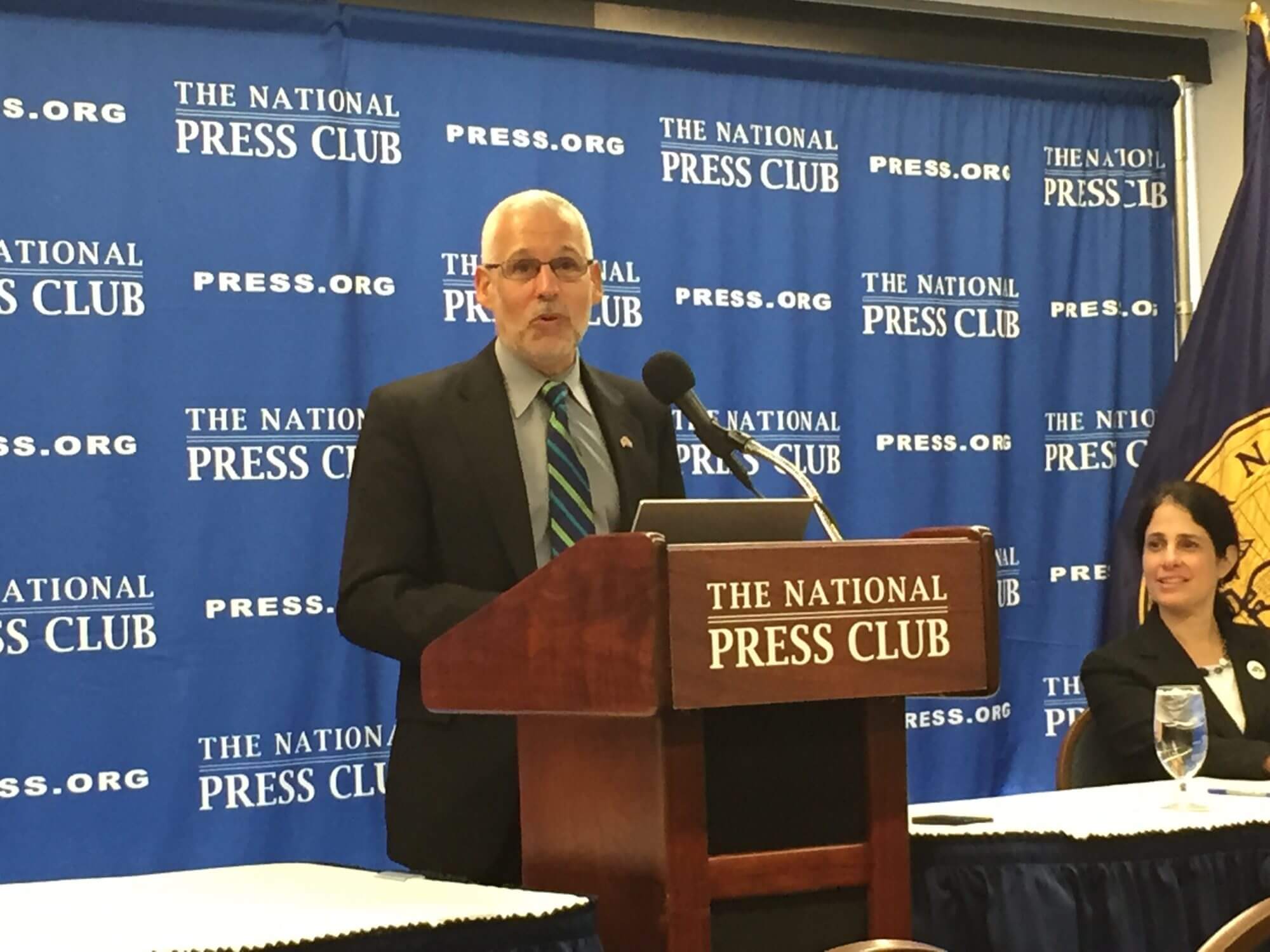
Scientist David Guggenheim speaks about the effects of ending the United States’ embargo on Cuba’s marine ecosystem (Shelbie Bostedt/MNS)
By Shelbie Bostedt
WASHINGTON – Ending the United States embargo of Cuba goods could be damaging to its healthy and thriving marine environment, according to a prominent scientist. The worry? American tourists.
At the National Press Club on Tuesday, marine biologist David Guggenheim discussed how the country’s embargo-inflicted isolation has allowed Cuba’s coral reefs to thrive while half of all other Caribbean reefs died off since 1970. According to Guggenheim, coral in those places may disappear altogether in the next few decades without action.
The United States imposed a full economic embargo against Cuba in 1962, after communists’ solidified control of the government in Havana. In January, after more than 50 years of the embargo, the Obama administration began talks with the Cuban government aimed at reestablishing diplomatic relations.
“As a marine biologist, I look underwater and see how connected we are to Cuba,” said Guggenheim, president of the non-profit group Ocean Doctor. “Sea turtles don’t carry passports.”
Guggenheim has made 83 research trips to Cuba to study its marine environment, which he says is “frozen in time.”
While working in Cuba, he discovered that Elkhorn coral, a species of coral that is nearly extinct elsewhere, was alive and well.
“I found an amazingly healthy ecosystem,” Guggenheim said of his field work. “It’s the way these ecosystems should look. It’s a living time machine.”
While Cuba has been open to tourism from other countries since the fall of the Soviet Union, the embargo limited travel from the United States to the country until 2009, when President Barack Obama began allowing Cuban-Americans to send financial support to family and friends remaining in Cuba and permitted travel for religious and educational purposes. In 2013, nearly 10 percent of the country’s GDP came from tourism, according to the World Travel and Tourism Council.
Though Cuba’s marine ecosystems remain healthy, Guggenheim fears for what may happen if and when Cuba opens to American tourists.
“They’re not ready for this growth in tourism,” Guggenheim said.
Though all lands in Cuba are under government control and regulation, subject toCuba’s environmental standards, Guggenheim fears the lure of foreign investment may trump the country’s desire to remain environmentally stable.
However, Dan Whittle of the Environment Defense Fund who has worked with Guggenheim in Cuba, said Cuba’s environment could be helped by the growth of tourism. The Cuban government allocates more economic resources toward protecting locations that will attract foreign visitors, as exemplified by the country’s Gardens of the Queen, one of the best-preserved coral reefs in the Caribbean.
“Tourism and environmental protection go hand-in-hand,” Whittle said, echoing the sentiments of a Cuban filmmaker he met on a recent trip to the country. “American tourism can be a real boon to environmental protection … increased revenues can increase investments.”
With tourism bringing in the possibility of development, Guggenheim hopes Cuba will respond to the economic growth with a model that will allow itto expand in an environmentally-conscious way, envisioning a “sustainable infrastructure to support this new tourism while still protecting wildlife.”



